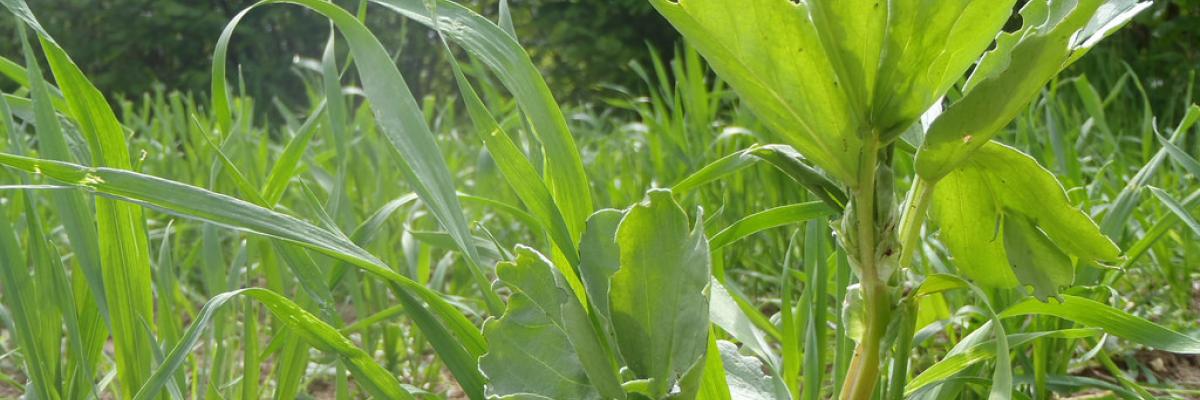

Beans and Wheat Intercropping: a new look at an overlooked benefit
ORC Bulletin No. 112 - Spring/Summer 2013
Download the PDF
Beans can be an important high protein livestock feed crop, wheat a valuable cash crop. However, under organic conditions, bean yields can suffer due to pests and diseases and weed competition. Intercropping wheat with field beans can help reduce these risks. This Organic Research Centre (ORC) bulletin introduces the potential benefits of intercropping cereal and legume crops, reports on a one year trial run at Wakelyns Agroforestry where spring wheat was intercropped with faba beans, and draws comparisons with a similar trial carried out by Reading University and the ORC. It explores the potential effects of intercropping on yields and potential benefits such as disease resistance, nitrogen enrichment, and weed repression. It provides some useful insights and points towards the benefits of growing spring beans.
- Several potential benefits can come from intercropping wheat and beans rather than growing as monocultures:
- Beans can fix and use atmospheric nitrogen, wheat uses nitrogen already in the soil.
- Wheat plants may have access to more nutrients per plant.
- Light competition and disease incidence can be lower.
- Pests can be reduced (beans can provide habitat and food source for beneficial insects).
- The two crops can be harvested together and separated using a seed dresser or used as a mixed livestock feed (if they mature around the same time), the intercrop can be used for whole crop silage, and both crops can potentially be used for human consumption.

- In the Wakelyn’s trial:
- Bean yields were relatively unaffected by increased wheat density.
- Bean yields were more stable in the intercropped plots and there were less weeds.
- When compared with the Reading/ORC trial, both found that where wheat was drilled at 75% its recommended density for sole cropping, wheat yield decreased as the bean density increased.
- Research has found weed biomass to be less in intercrop versus monocrop plots and that intercropping can create changes in disease patterns.
The article highlights the importance of carrying out trials before embarking on large-scale intercropping.
